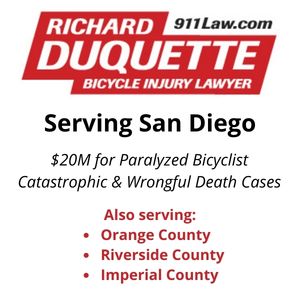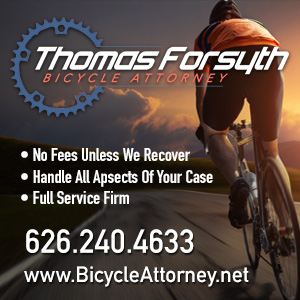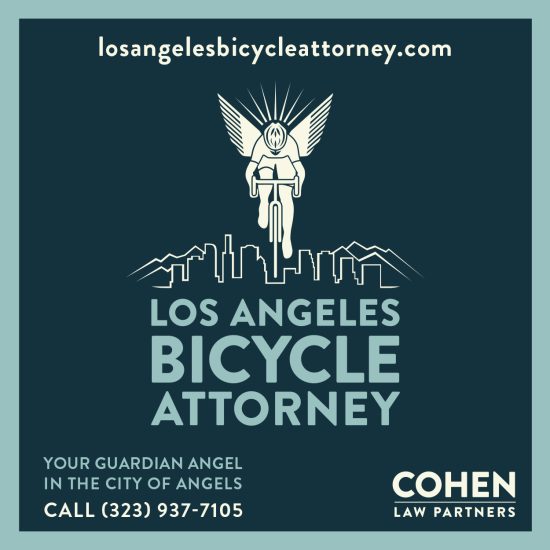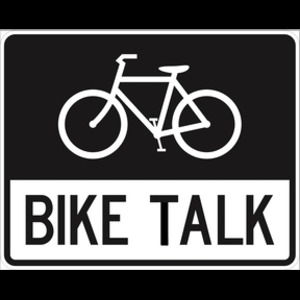
Just 327 days until Los Angeles fails to meet its Vision Zero pledge to eliminate traffic deaths by 2025.
So stop what you’re doing and sign this petition to demand LA Mayor Karen Bass hold a public meeting to listen to the dangers we face just walking and biking on the mean streets of Los Angeles.
Then share it — and keep sharing it — with everyone you know, on every platform you can. We’re over 900 signatures, so let’s try to get it up over 1,000!
Graphic by OpenClipart-Vectors from Pixabay.
………
Let’s start with a comment yesterday from Norwood Paukert, who reports being the victim of a violent vehicular assault in LA’s Griffith Park on Sunday.
I was deliberately struck by a vehicle when riding in the bike lane on Zoo Drive in Griffith Park Sunday afternoon about 12:30. At least that’s what the park ranger told me today based on testimony from several witnesses. Unfortunately the plate # reported turned out to be wrong or impartial. I have no memory of being hit…I regained consciousness as I was being put on a stretcher to go to County ER. I fortunately suffered cuts, bruises, and contusions but no broken bones or serious injuries. I had no contact with any vehicle, verbally or in any other way…I have no idea why this driver deliberately tried to take out a 72-year-old man riding his bike in the park.
If anyone has any information, let me know any I’ll forward it to Paukert.
And let’s hope he reported this to the LAPD, because this appears to be a crime, and should be treated no differently than if he was the victim of any other assault with a deadly weapon.
If it can be shown that the act was intentional, the driver could also be subject to treble the actual damages under LA’s cyclist anti-harassment law, as well as lawyers fees and possible punitive damages.
Which could add up, given the high price of emergency care these days.
………
Los Angeles is finally getting around to closing the thousand-foot bike lane gap on Imperial Highway next to LAX.
Streetsblog’s Joe Linton reports construction is underway on new ADA compliant sidewalks and what passes for a protected bike lane in Los Angeles, with a slim row of car-tickler plastic bendie posts, which are somehow supposed to magically keep drivers out.
This is how Linton describes the previous state of affairs.
For many years there have been basic unprotected bike lanes on Imperial Highway east of the Aviation Boulevard C Line Station. In this area, Imperial has a posted speed limit of 50mph, which many drivers exceed. It’s effectively an extension of the 105 Freeway. That freeway ends a mile east of the city’s project, dumping drivers onto Imperial. It’s not a pleasant place to bike, but it is one of very few roadways that connect to the coast through the somewhat impermeable airport-industrial area.
The existing Imperial lanes got within a half-mile of the beach, then dropped just east of Pershing Drive, leaving a ~1,000 foot gap before the bike lane resumed west of Pershing. Some signage directed cyclists to ride on the sidewalk.
Linton’s description of it as “not a pleasant place to bike” is a significant understatement; I rode there once myself, and vowed to never do it again.
Somehow, I can’t see those white plastic posts keeping any cars out. Or even surviving very long, since they’re likely to get plowed down by drivers speeding along the road after exiting the freeway.
………
The popular beachfront Marvin Braude Bike Trail is closed between Chautauqua Boulevard and Entrada Drive due to damage from the recent storms, after an elevated segment of the path collapsed onto the beach below; no word on when repairs will begin, let alone be completed.
………
More on the Waymo self-driving cab that crashed into a San Francisco bike rider, who picked himself up and rode off on his own, after reporting just minor scratches.
According to a representative for Waymo,
The Waymo vehicle was at a complete stop at a four-way intersection. An oncoming large truck progressed through the intersection in our direction and then at our turn to proceed, we moved into the intersection.The cyclist was occluded by the truck and quickly followed behind it, turning left and crossing into the Waymo vehicle’s path. When they became fully visible, our vehicle applied heavy braking but was not able to avoid the collision. Waymo called police to the scene and the cyclist left on their own, to our knowledge reporting only minor scratches. We are making contact with relevant authorities surrounding this event.
Thanks to Streets Are For Everyone, aka SAFE, founder Damian Kevitt for forwarding the statement.
………
Thanks to Robert Leone for forwarding news that the San Diego Association of Governments is still looking for input on their regional transportation plan.
As a reminder, in 2023, we gathered input from people across the region about their priorities for improving our transportation system. To help the public understand how we used your feedback, we made a report about how this input is guiding the projects, programs and policies being considered in our Draft 2025 Regional Plan.
Thank you to everyone who viewed that report and sent in comments so far—your feedback has been passed along to our Board and staff.
Our SANDAG Board will continue reviewing the initial concept of our Draft 2025 Regional Plan this Friday, February 9 at 10 a.m. and providing feedback to our staff. If you would like to send in your feedback for that discussion too, you can:
- Send an email to clerkoftheboard@sandag.org by 4 p.m. on Thursday, February 8 (with “Regional Plan” in your subject) and/or
- Make a comment at the Board meeting virtually or in person. Note, comments may be limited to one minute per person.
Thank you for staying in contact with us,
………
Here’s your chance to support CicLAvia while quaffing a quality craft West Coast IPA in Culver City tomorrow.
CicLAvia Kicks Off 2024 Season with Beer Collaboration and Fundraiser
LA Ale Works Releasing “seek-la-VEE-ah” West Coast IPA on Friday evening, February 16 at Ivy Station in Culver City
Who / What: CicLAvia has partnered with Los Angeles Ale Works to kick off the 2024 season and launch a beer collaboration with a West Coast IPA affectionately named seek-la-VEE-ah. This venture is all about the “miles of smiles” that Los Angeles’ extremely popular open streets events create.
Where: Los Angeles Ale Works, at the Ivy Station Complex, 8809 Washington Blvd, Culver City
When: Friday, February 16, Culver City Arts District Night Market is open 5-10 pm, LA Ale Works open 12 pm– 2 am
Why: To kick off CicLAvia’s 2024 events schedule and debut a West Coast IPA affectionately named
seek-la-VEE-ah. A portion of the proceeds from the event, and all future sales of seek-la-VEE-ah will be donated to CicLAvia, a 501(c)3 nonprofit organization.
Outside of LA Ale Works’ tasting rooms in Culver City and Hawthorne, the beer will be available in cans and on draft throughout Orange, Los Angeles and Ventura Counties. From neighborhood craft beer bottle shops up to larger retailers like Whole Foods, Sprouts and Total Wine. Partners who are interested in carrying the beer, please contact LA Ale Works.
“Near and dear to our hearts, our team has participated in CicLAvia events since the early days of the organization,” says Los Angeles Ale Works Managing Partner Andrew Fowler. “We are inspired by how CicLAvia safely brings Angelenos together, the positive environmental impacts it makes, the connections we feel to our communities during the events and the promotion of public transportation. We believe so strongly in public transportation that our new Culver City location is literally built into the Metro E Line station.”
How: Free. No RSVP required. The event will be in conjunction with the where there will be several food trucks, music, games, local vendors, and kid-friendly activities including The Ballusionist balloon artist. CicLAvia will be on site selling merchandise and sharing information about the 2024 schedule. All ages welcome.
Beer Style: West Coast India Pale Ale, ABV: 6.5%, Hops: Wakatu, Azacca, El Dorado, and Idaho 7
Description: Catalyze your senses with vibrant notes of stone fruit and California citrus as we celebrate active transportation, public spaces and car-free streets. Available on draft and in 4-packs of 16 oz cans.
………
It’s now 49 days since the California ebike incentive program’s latest failure to launch, which was promised no later than fall 2023. And 31 months since it was approved by the legislature and signed into law — and counting.
………
The war on cars may be a myth, but the war on bikes just keeps on going.
Um, no. The mayor of a small Irish town called for removing a protected bike lane from one side of a roadway, arguing that the current bollards and armadillos create a health and safety hazard for motorists. Because apparently, drivers can’t manage to drive safely and stay where they belong, and bollards evidently cause cancer, or Covid, or the common cold or something.
………
Local
Streetsblog offers more details on the lane reduction and protected bike lanes on the eastern section of Hollywood Blvd between Gower Street and Lyman Place, just west of the intersection with Sunset Blvd; 56 people were killed or severely injured along that stretch over the last decade.
Students, staff and faculty at University of California campuses, including UCLA, can get discounts ranging from 15% to 60% off ebikes from Dirwin Bike, Lectric Bike, Ride1Up and Velotric. Which is yet another reminder that we’re all still waiting on California’s moribund ebike incentive program.
A columnist for the conservative Los Angeles Daily News calls for rejecting the Healthy Streets LA ballot measure, calling the city’s mobility plan a con, and saying “this is no way to plan transportation in Los Angeles.” And in the process, somehow managing to get most of it exactly wrong.
Spectrum News 1 explains how to file a claim for damages caused by the ever-growing number of potholes pockmarking streets in the City of Angels.
State
Megan Lynch forwards news of the passing of outrageous San Diego musician and former Ocean Beach bike mechanic Mojo Nixon, who died of a heart attack after performing with his band The Toad Toadliquors during the week-long Outlaw Country Cruise; Nixon was best known for MTV hits Elvis is Everywhere and Don Henley Must Die.
National
A writer for Medium says riding an ebike will change your perspective.
Tomorrow is Winter Bike to Work Day in Colorado, and other cities and states where the winter riding conditions are nowhere as good as California, which doesn’t observe it.
If you happen to find yourself in the Big Easy over this Mardi Gras weekend, you can follow the bike-friendly Purple Way to the French Quarter and the Uptown parades.
International
Forbes offers what they call a “complete and comprehensive guide” to the year’s best bike brands.
A British Columbia letter writer says moving bike riders to the back of an island ferry so they don’t interfere with drivers zooming off the boat is a step backward, effectively telling bike-riding visitors they aren’t welcome; another letter writer says supporting bicyclists requires improving infrastructure.
Congratulations to Edinburgh, Scotland for topping the list of the world’s worst bike lanes. Although it makes you wonder if they’ve ever seen a “protected” bike lane in Los Angeles.
Bike riders are once again welcome on London’s Hammersmith Bridge during a pause in stabilization work, caused when a boatload of soccer fans crashed into it.
A new report says bike riding in the UK peaked 75 years ago, due to a lack of funding and government policies locked in car dependency.
Competitive Cycling
Canadian Cycling Magazine fantasizes about a number of wild ways substitute riders in the Tour de France could completely change racing, like tag-team breakaways.
Finally…
This is either a very badly worded headline, or the driver committed murder after the crash. If you’re carrying over 3.5 ounces of meth laced with fentanyl on your bike, don’t ride salmon, bro.
And we may worry about LA drivers running up our ass, but at least we don’t have leopards biting our butts.
………
Be safe, and stay healthy. And get vaccinated, already.
Oh, and fuck Putin









